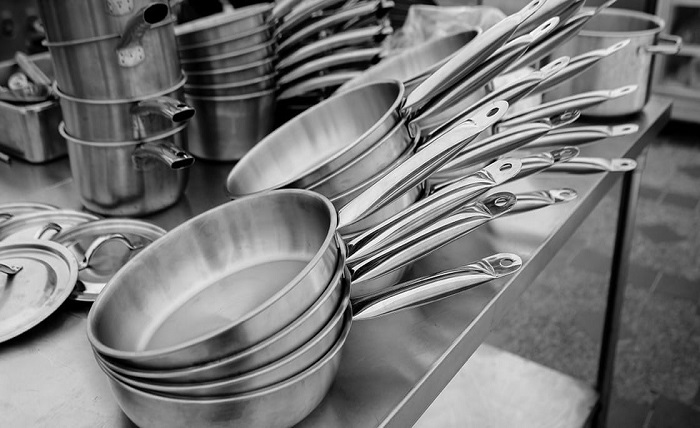How to Choose a Manufacturer Of Stainless Steel Cookware

The quality of stainless steel cookware can vary wildly. It is important to know what to look for before you invest in a set.
Look for fully-clad cookware that has a layer of aluminum or copper bonded to the stainless steel. This makes the pans resistant to high heat and ensures an even cooking surface.
Durability
Stainless steel is an iron-based alloy that contains chromium, which helps it resist corrosion and keep its polished appearance. You might see a number combination such as 18/10 when shopping for stainless steel cookware; this refers to the amount of chromium and nickel in the alloy, which is important for durability and preventing rust and staining.
This metal is non-reactive, so it won’t interact with acidic foods like tomatoes or vinegar and cause them to leach metals into your food. This makes it a safer option than nonstick cookware that uses Teflon, which can flake off and leave harmful chemicals in your food.
Some manufacturers like KÖBACH make their stainless steel cookware with aluminum or copper cores, which improve heat transfer and help the pans retain heat even when empty. This is especially important for people who are sensitive to the chemicals in Teflon (also known as PFAS), which can cause health problems if they’re heated to high temperatures.
Corrosion Resistant
The best stainless steel cookware sets are made from a durable metal that’s not easily affected by acidic ingredients or high temperatures. In fact, it can often last a lifetime, as long as you treat it well and don’t throw it away!
Look for a set that’s crafted from 18/8 stainless steel, which has a high level of chromium and nickel to keep it strong and corrosion-resistant. It’s also magnetic, which can help prevent it from being discarded accidentally in conveyor dishwashers and trash bins!
The higher the grade of stainless steel used in your pots and pans, the more resistant it will be to corrosion and acidic products. 304 stainless steel is one of the most common grades used in commercial kitchens, but it can be improved upon by 316 steel that adds molybdenum to increase its resistance to acidic elements and high temperatures.
Non-Stick
When people think of stainless steel cookware, they envision professional kitchens stocked to the brim with sleek pans. They may even picture a chef working some sort of culinary sorcery, coaxing a perfect sear out of the pan.
Unfortunately, this kind of cookware comes with a significant environmental footprint when it’s made and distributed. The raw materials used in the metal, like iron, chromium, and nickel, require a lot of energy to mine and produce, which leads to high carbon emissions.
Fortunately, there are ways to reduce these environmental impacts. For example, look for eco-friendly stainless steel brands that offer nonstick cookware as well. The aluminum in the nonstick coating allows for quick heat conduction, while the ceramic substance provides a smooth and durable cooking surface. Also, look for 3-ply or 5-ply cookware that has added layers of copper or aluminum between the non-reactive metal exteriors. This will further improve heating distribution and allow for more even cooking.
Safety
Stainless steel is considered one of the safest materials for cookware. It can also last a lifetime if well-cared for. It is durable, easy to clean, and not prone to rust or corrosion. Stainless steel is an iron-based alloy, with elements like nickel, aluminum, titanium, and copper added to improve strength, durability, and corrosion resistance.
When shopping for stainless steel cookware, look for a grade stamp. The highest quality stainless steel will be labeled 304 or 316. These are austenitic grades of stainless steel, and they are more resistant to rust and corrosion than lower-quality steels. You may see these pans labeled as 18/0 or 18/10, which indicates the amount of chromium and nickel in the steel.
Look for a set or piece of cookware that’s fully clad, which means it has an inner layer of aluminum or copper, as well as the outside layer of stainless steel. This will help the metal conduct heat more efficiently and evenly.




